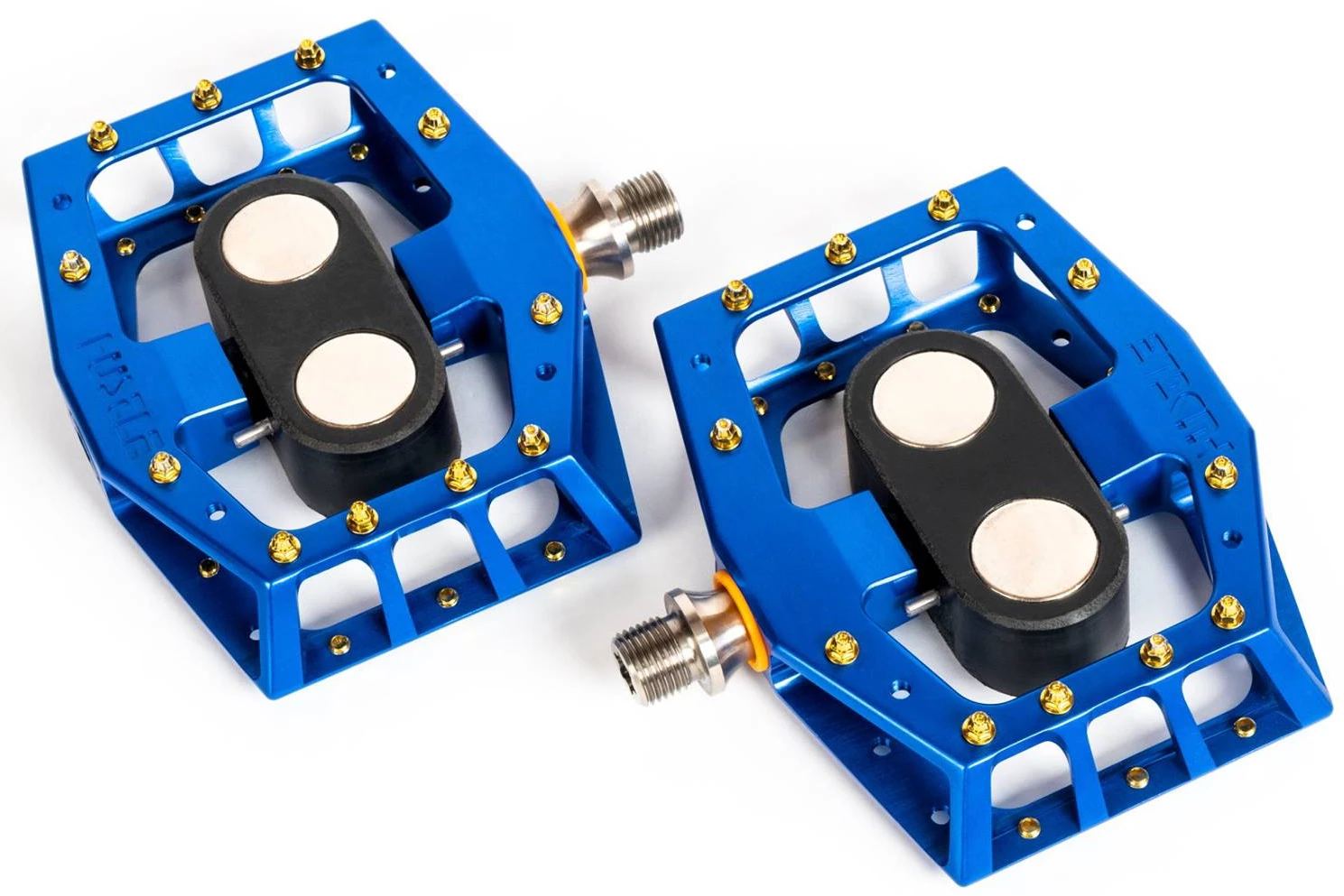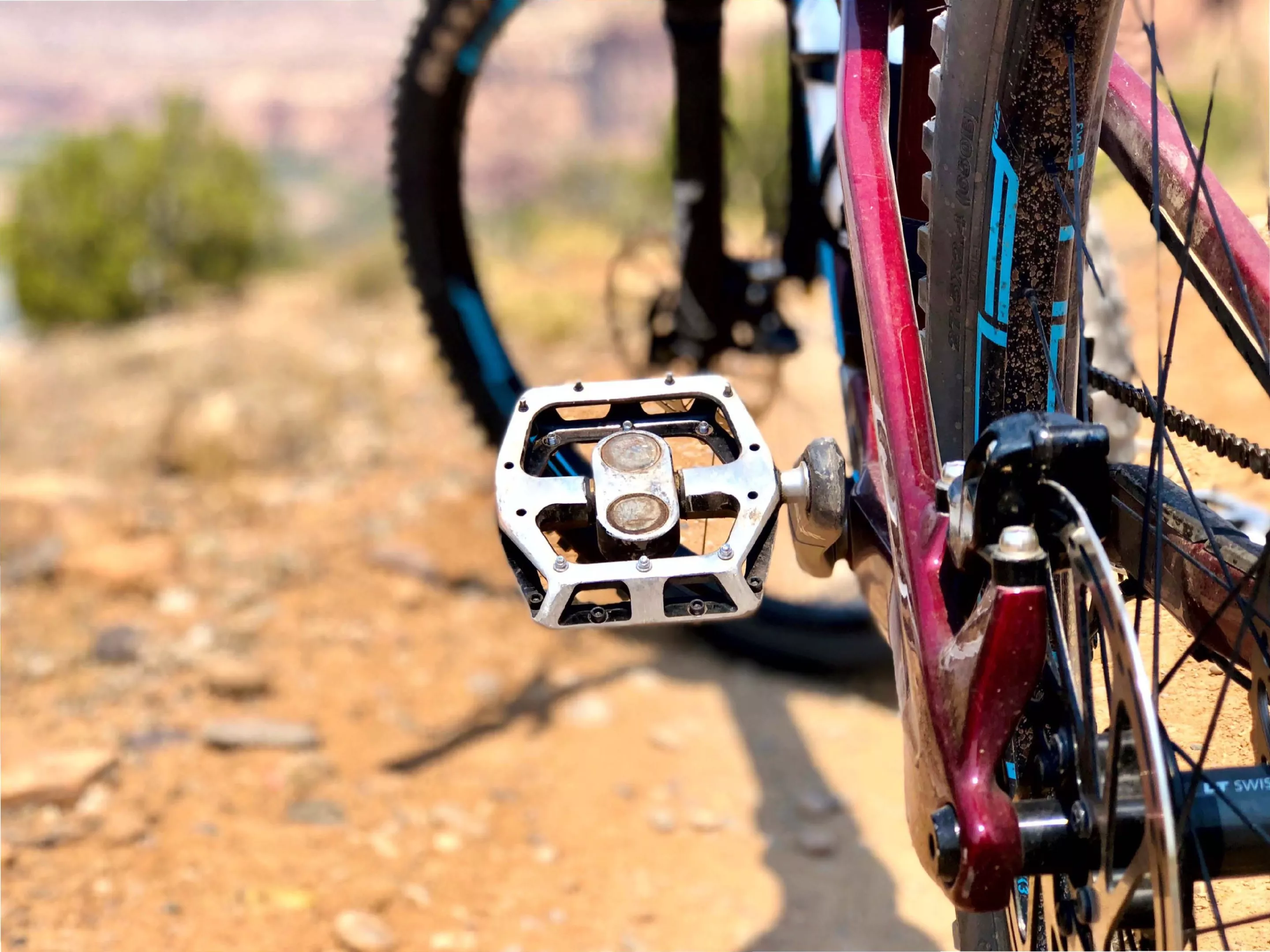Although many mountain bikers like the retention offered by "clipless" pedals, others prefer the ease-of-use and wide platform offered by flats. Hustle Bike Labs has attempted to amalgamate the best features of both, in its magnetic REM Pedal.
First of all, these aren't the first pedals we've seen that use magnets to keep the rider's shoes on the pedals.
MagLOCKs, for instance, have 10 neodymium magnets inside each pedal, which are attracted to a steel cleat that's attached to the underside of the shoe. All 10 magnets produce a total attractive force of 40 to 45 lb (20 kg) per pedal, although that force can be reduced by removing some of the magnets. Because the magnets are set flush into the pedal, though, the rider's shoe cleat only fully engages them when their foot is flat against the pedal platform.
magped pedals address this limitation with a design that incorporates just two magnets per pedal (one on each side of the pedal), that are mounted on flexible polymer dampers. As a result, the rider's foot is able to tilt back and forth a bit along with the magnets, relative to the platform. Like the MagLOCKs, these pedals have a maximum attractive force of 45 lb – if the stronger magnets are selected.
Invented by Colorado-based cyclist Craig Payne, the REM Pedal takes a different approach yet. Each one utilizes two neodymium magnets, which are a type of rare earth magnet – or REM for short. Both magnets run all the way through the pedal, combining their force on both sides. And instead of being mounted on dampers, they're built into a nylon composite housing that rotates laterally on the chromoly steel pedal axle, independent of the 7000-series aluminum pedal body.

Thanks to this design, each pedal is claimed to produce a whopping 128 lb (58 kg) of attractive force. As is the case with the other magnetic pedals, that force is mainly vertical – the SPD-compatible shoe cleats can be disengaged simply by twisting the foot sideways. Additionally, the REMs can also serve as plain ol' non-magnetic pedals, if the cleats aren't used.
Some of their other features include sealed bearings, and 15 adjustable-height traction pins per side. We're told that the first version of the pedals should tip the scales at around 615 to 620 grams per pair (22 oz), and be priced within the US$150 to $200 range. A titanium-axle model, to be released later this year, should weigh in at around 600 g (21 oz).
Plans call for the REM Pedal to be officially launched at the Sea Otter Classic mountain bike festival, which takes place in Monterey, California in April.
Source: Hustle Bike Labs via PinkBike






